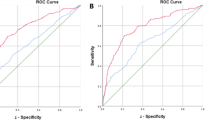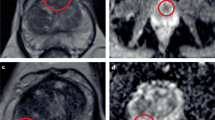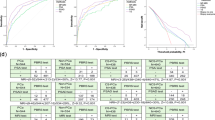Abstract
This report reviews developments in the early diagnosis and staging of prostate cancer and updated on the incidence of postate cancer to discuss the pros and cons of population based screening. Refinements and reliability of various diagnosic procedures are described such as PSA testing, transrectal ultrasound, ratio beteen PSA-level and ultrasound measured prostate volume, rate of change of PSA-level, combination factor equations computed by neural network programs to predict likelihood of prostate cancer, artificial neural network analysis of subvisual transrectal ultrasound information, measurements of different PSA-forms of PSA (in particular percent free PSA), and glandular kallikrein 2.
This is a preview of subscription content, access via your institution
Access options
Subscribe to this journal
Receive 4 print issues and online access
$259.00 per year
only $64.75 per issue
Buy this article
- Purchase on Springer Link
- Instant access to full article PDF
Prices may be subject to local taxes which are calculated during checkout
Similar content being viewed by others
Author information
Authors and Affiliations
Rights and permissions
About this article
Cite this article
Lilja, H., Lilja, D. Early Diagnosis and Staging. Prostate Cancer Prostatic Dis 2 (Suppl 1), 15–18 (1999). https://doi.org/10.1038/sj.pcan.4500271
Published:
Issue Date:
DOI: https://doi.org/10.1038/sj.pcan.4500271



